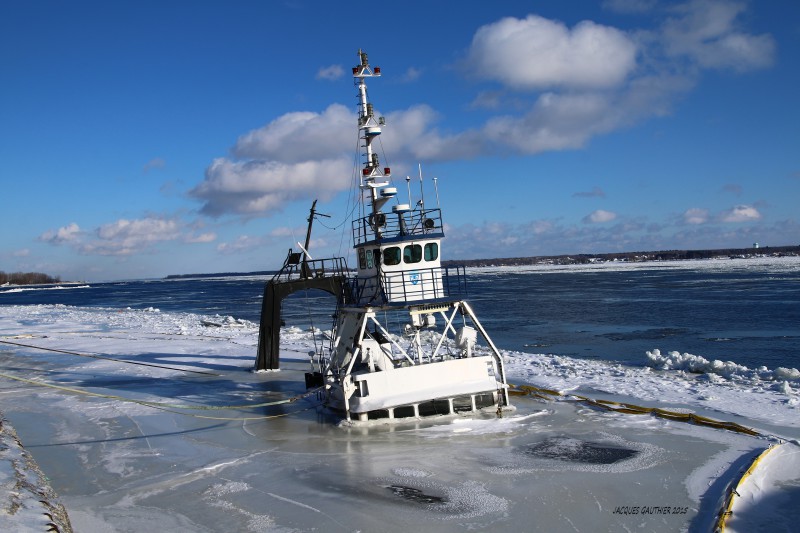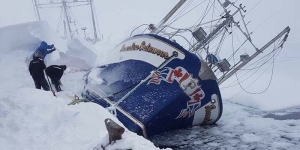HOW DOES WINTER IMPACT OIL POLLUTION DAMAGES FROM SHIPS AND BOATS IN CANADA?
2022-02-28
Before heading to the warmer spring temperatures, we explored the impacts of winter on our portfolio of incidents. The Fund receives claims for oil pollution damages anytime during the year. But we noticed some particularities when ice, snow, snowstorms, and cold weather are in season.
We examined 15 claims from 13 different winter incidents. The incidents occurred across the country, For more information about each incident, visit: https://sopf.gc.ca/?page_id=11715.
Sinking of the Chaulk Determination in the icy waters of Trois-Rivières, Quebec
- The incident represents the largest-ever payment for a single incident in our history. Over $4.3 million was paid to compensate two claimants. The cleaning efforts removed a total of 469,270 litres of ice with traces of pollutants in temperatures reaching -40°C.
You can watch a video published by Groupe Océan, company involved in the complex salvage and clean-up operations:

Chaulk Determination (2015) – Photo credit: Jacques Gauthier
Vessels may suffer damage when frozen into the ice
- In the incident involving the Jennifer Holly (2019), NL, only removing fuel from the vessel was possible until the ice cleared. Later, in an attempt to extract the vessel from the ice, significant additional damage was done, causing some oil to spill.
Clean-up operations delayed due to ice
- In both the Lord Selkirk II (2014) and the Centurion – CCG Claim (2012), preliminary clean-up operations were completed. Further clean-up operations had wait for the ice to melt, in either spring or summer. Containment boom are sometimes placed to contain oil in case it is released during the ice melt.
Additional equipment or specific operations used to prevent oil pollution
- Icebreakers can be used to clear or break the ice, to facilitate the clean-up operations or to relieve the pressure around a ship. They were used for both the Calypso IV (1994), QC and the Princess No. 1 (1994), ON. Monitoring during icebreaking operation is necessary as it may free polluted ice.
- In the case of the Cormorant (2015), NS the local fire department used water pressure to blast the snow and ice off the partially sunken vessel.
- In the 2017 mystery spill, QC, the clean-up crew had to melt the ice to recover hydrocarbons with absorbents.
Weight of the snow, ice and water levels may cause vessels to sink
- In three incidents, which occurred in British Columbia and in Newfoundland and Labrador, the snow build-up caused the vessels to sink:
- Unknown Name (Houseboat) (2020) – BC
- Zodiac Light (2018) – BC
- Baccalieu Endeavour (2017) – NL

Baccalieu Endeavour (2017) – Photo credit: Canadian Coast Guard
- In the case of the Cogna (1995), QC, the vessel was moored in an exposed position. The ship later sank due to high water levels and ice conditions.
Winter conditions can add delays, further damages, and extra efforts to address oil pollution incidents. Sometimes, these factors may have an impact on the amount of the claims submitted to the Fund for clean-up costs and salvage operations.
